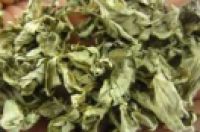
额骨与顶骨基础解剖知识总结:
一、额骨(frontal bone)
额骨【The frontal (L. frontal = forehead) bone】位于前额区(region of the forehead),外形呈壳样(shell)。
(一)分部(Parts)
It consists of the following six parts:
1. 鳞部(Squamous part)×1
2. 鼻部(Nasal part)×1
3. 眶板(orbital plates)×2
4. 颧突(zygomatic processes)×2
(二)额骨各部的特征性结构
1. 鳞部(Squamous Part)
额骨鳞部有内表面和外表面(external and inner surfaces)。
(1)外表面(external surface)
眶上缘(supraorbital margin):每侧鳞部的下部与眶板相连处,构成了眶上缘。
眉弓(superciliary arch):为鳞部外表面的眶上缘上方的一弧形隆起(curved elevation)。
眉间(glabella):为两个眉弓之间的圆形突起(rounded prominence)。
额结节(frontal tuber):又名额隆凸(frontal tuberosity)或者额隆起(frontal eminence)。为额骨鳞部外表面眉弓上方的一个隆起。
(2)内表面(internal surface)
额骨嵴(frontal crest):额骨鳞部内表面深凹,正中有一骨嵴,称为额骨嵴,与其上方的矢状窦延续。
上矢状窦沟(superior sagittal sinus)
脑膜中动脉沟(groove of the meningeal artery)
2. 鼻部(Nasal Part)
鼻部是左右眶上缘之间向下突出的骨质部分。
鼻切迹(nasal notch):从正中平面向两侧,先后与其下方的两块鼻骨(nasal bone)、两块上颌骨额突(frontal process of maxilla)和两块泪骨(lacrimal bone)形成关节。
鼻根点(nasion):额-鼻缝(frontonasal suture)的中点。
额骨鼻棘(nasal spine of frontal bone):额骨鼻部向下突向鼻腔的骨性突起。
3. 眶板(Orbital Plates)
每侧眶板是一个从眶上缘水平向后延伸的三角形弯曲骨板(triangular curved plate ofbone)。它构成了大部分眶顶。
两块眶板之间由U形筛切迹(ethmoidal notch)隔开,筛切迹容纳筛骨筛板(cribriform plate of theethmoid bone)。
4. 颧突(Zygomatic Processes)
(1)额骨颧突(zygomatic processes of frontalbone)
每侧一个,从眶上缘外侧端向下和侧向延伸。
额骨颧突与颧骨额突(frontal process of thezygomatic bone)以额颧缝(frontozygomatic suture)相连。
(2)关键孔(keyhole):
关键孔由MacCarty于1961年发现并命名,之后此孔在额颞和眶颧入路中广泛应用。【In 1961, MacCarty described aburr hole to expose the periorbita and frontal dura while approachingintraorbital meningiomas. This burr hole became immortalized as the “MacCartykeyhole” and is used widely today in frontotemporal orbitozygomatic approaches.】
关键孔位于额颧缝的后方1cm处的上方。【The MacCarty keyhole (almosttwice the size of a regular burr hole) is drilled over the frontosphenoidalsuture 1 cm behind the frontozygomatic junction (between the zygomatic processof the frontal bone and the frontal process of the zygomatic bone).】
关键孔的上半部暴露额部硬膜,下半部暴露眶骨膜。【The upper half of the burrhole should expose the dura mater and its lower half the periorbita, with thebony roof of the orbit separating the two halves】
(3)颞线:
从每侧额骨颧突的后缘起,颞线向上和向后弯曲,分成颞上线和颞下线(superior and inferior temporallines),它们分别是颞筋膜和颞肌的附着处。
颞线向后到顶骨,然后向下,终止与乳突上嵴。
(三)临床相关(Clinical correlation)
额骨为膜内骨化(ossifies in membrane)。出生时,额骨被额中缝(median frontal suture)分成两部分。每部额骨的额隆凸区(frontal tuberosity)出现一个初级中心。两半的结合从第二年开始,通常在第八年结束前完成。这种骨缝在成人中的残留常见于眉间区(region of glabella),它被称为额中缝(metopic suture)。
额骨眶板骨折(fracture of orbital plate of frontal bone)导致眶内出血。结膜下出血呈三角形,顶点朝向角膜,底部朝向眶缘(The hemorrhage acquires a triangular shape underneath theconjunctiva with apex towards the cornea and base towards the orbital margin.)。
额骨鳞部容易骨折(The frontal squama is prone to fracture)。在新生儿(neonates)和婴儿(infants)中,一般都是凹陷性骨折(depressed fracture),而在成人(adults)中,则表现为裂缝骨折(fissured fracture)。
二、顶骨(parietal bone)
顶骨是一个弯曲的骨板,形成了颅骨穹隆的主要部分。它呈四边形的。
(一)概况(general situation)
The parietal bone presents:
1. Two surfaces: external and internal.
2. Four borders: superior (sagittal), inferior, anterior, and
posterior.
3. Four angles: frontal, sphenoidal, occipital, and mastoid.
(二)面(Surfaces)
The two surfaces of the parietal bone are asfollows:
1. 外表面(External surface)
l 光滑(smooth),外凸(convex)。
l 顶结节(parietal tuber):或称为顶骨隆起(parietal eminence)或顶骨隆凸(parietal tuberosity)。为顶骨中心附近的一个隆起,这是顶骨外表面最突出的特征。
l 顶骨的颞上线和颞下线:位于顶结节下方。
l 顶孔(parietal foramen):位于上缘后部附近。
2. 内表面(Internal surface)
凹形(concave)。覆盖于大脑半球顶叶之上。具有以下特征:
矢状窦沟(Sagittal sulcus):沿着顶骨上界走行,每侧顶骨仅占沟的一半,内容上矢状窦。
位于矢状窦沟两侧的颗粒状凹坑(Granular pits),其中存在蛛网膜颗粒(arachnoid granulations)。
脑膜中动脉沟(groove of the middle meningealartery):紧靠前缘的深骨槽,内容脑膜中动脉前支;从下缘的中间向上延伸的骨槽内容纳脑膜中动脉后支。
乙状窦沟(groove of sigmoid sinus):为横过顶骨后下角(posteroinferior angle)的横沟,其内容纳乙状窦(sigmoid sinus)。
(三)界(Borders)
The four borders of the parietal bone are asfollows:
1. 上缘(Superior border)——矢状缘(sagittal border):两块顶骨之间以矢状缝相连。
2. 下缘(inferior border)——鳞缘(squamosal border):从前向后分别与3块颅骨相连:
蝶骨大翼(greater wing of sphenoid bone)
颞骨鳞部(squamous part of temporal bone)
颞骨乳突部(mastoid portion of thetemporal bone)
前缘(anterior border)——额缘(frontal border):与额骨之间以冠状缝(coronal suture)相连。
后缘(posterior border)——枕缘(occipital border):articulates with the 与枕骨鳞部(squamous part of the occipitalbone)以人字缝(lambdoidsuture)相连。
参考资料:
1、《rhoton’scranial anatomy and surgical approaches-(2007)》
2、Shapey J., Jung J., Barkas K., Gullan R., BaraziS., Bentley R., Huppa C., Thomas N.W. A single centre’s experience of managingspheno-orbital meningiomas: lessons for recurrent tumour surgery ActaNeurochirurgica, Volume 161, 2019
3、《textbook of anatomy: head, neck and brain, volume Ⅲ,2e》
4、《grant’s atlas of anatomy ofanatomy, 14th edition》
5、网站:
https://www.anatomystandard.com/Cranium/Neurocranium/Frontal.html
https://www.anatomystandard.com/Cranium/Neurocranium/Parietal.html




